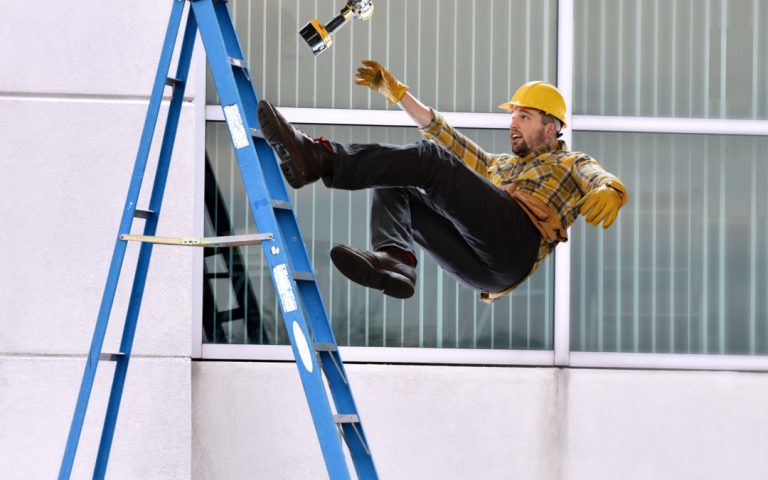If you’re hurt at work, it can be scary and you might not know what to do next. However, the steps you take immediately following an injury are important. The following are the steps to take if you are hurt at work and some other things to know in general if you find yourself in this situation. The Most Common Workplace Accidents and Injuries You can get hurt in any work environment, although some are more dangerous than others. For example, construction is known for being a particularly risky field for injuries. Construction workers face what is called the Fatal Four by OSHA. The Fatal Four are falls, getting hit by something, electrocution, or being caught between objects. Even in an office environment that’s seemingly safe, however, you can still get hurt. Some of the most common workplace and work-related accidents include: Car and vehicle accidents: When you drive as part of your job, you’re exposed to roadway risks. You could also be hit by a moving vehicle on a job site, for example, if you work in construction. Sometimes, if you’re hurt in a car accident, you may be able to pursue compensation beyond workers’ compensation. Slip and falls: Slip and fall accidents are very common and stem from workplace hazards like wet floors. When you fall, you can experience soft tissue damage, broken bones, or even traumatic brain injuries. Fall from a higher elevation: Falling from a ladder, scaffolding, or platforms can lead to severe injuries. OSHA does require fall protection for workers who are at certain heights or who use particular types of machinery. Electrocution: If you’re working around wiring or cords, you’re at risk of electrocution. Hitting underground cables or working near power lines can also cause this type of injury. Being hit by objects: Whether it’s a flying, rolling, swinging, or falling object, this scenario can cause blunt-force trauma including internal injuries and eye injuries. Entanglement: Heavy machinery has the potential to trap employees and lead to crushing or tearing injuries. Repetitive motion: These types of injuries don’t stem from one particular situation. Instead, they’re caused by repetition and doing the same tasks over and over again. Carpal tunnel syndrome is an example. So, if you face the above situations or any other type of injury, what are the next steps? Report the Injury If you’re hurt in any way at work, the first thing to do is report the injury and then get an accident report. Your company may have a specific protocol for reporting injuries, but the big takeaway, regardless of specifics, is making sure that you do report it right away. Go to your supervisor and be clear as far as what happened and the details surrounding how you were hurt. You need to make sure that your employer does create an official accident report, which becomes your paper trail to show that you reported your injury. You should get a copy of the report too. Of course, if your injury needs immediate treatment, that’s your priority. In some states, you’re required to provide written notice of your injury. You should check to see what the requirements are where you live. Get Medical Attention If you’re ever hurt at work, you should see a doctor or health care provider as soon as you can. If you need to, go to the emergency room. There are a couple of reasons this is important. First, you want to make sure that you don’t have any underlying injuries you aren’t yet noticing. When you’re in any type of accident, it’s common to experience an adrenaline rush. That can mask pain or symptoms you might have. A doctor can make sure that you don’t need treatment. The other reason is that, again, this is part of building a paper trail. Even if you think you’re fine overall and don’t need medical attention, get it anyway. Tell Your Co-Workers What Happened If you file a claim for compensation, having told your coworkers what happened at the time of the accident can be helpful. You want to have witnesses, and you also want to help protect them from being in a similar situation. Take Videos and Photos If you’re able to do so, take videos and photos of the scene where your accident occurred. Keep these for your records. Try to take them from different angles, and a video can be even more helpful than photos sometimes, although ideally, you want both. Keep An Accident Journal From the time your accident occurs, create a notebook where you keep all of the relevant information related to your injuries and what happened. You want to document everything, including your medical visits, expenses, how long you’re out of work and symptoms you experience. You should include details about any out-of-pocket expenses you incur because of your injuries, including mileage. Filing a Workers’ Compensation Claim Depending on your situation, you might end up filing a workers’ compensation claim. The process is similar to filing other insurance claims, and it’s a request for benefits, not a lawsuit against your employer. The first step is to notify your employer, and they have to offer you a claim form. Without completing this claim form, your employer doesn’t have to provide benefits. You need to keep a copy of this form for your own records, and you can mail it or hand-deliver it to your employer. You may need an attorney, depending on how complex your case is. If you don’t understand anything that’s happening, it’s a good idea to go ahead and get in touch with a lawyer. If you already took the steps above, then it can help your workers’ compensation claim process. Finally, be careful if you’re talking to an insurance adjuster. They are trained to take statements that they can then use against you. This is another way an attorney can help you if you get hurt at work.










